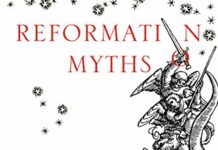
Ebook Info
- Published: 2017
- Number of pages: 303 pages
- Format: PDF
- File Size: 4.11 MB
- Authors: Rodney Stark
Description
Why is it that the majority of people, from all socio-economic, education, and ethnic backgrounds, ascribe to some sort of faith? What draws us to religion? What pushes us away? And what exactly is religion anyway?Defining religion over the past century has, ironically, led to theories that exclude belief in God, proposing that all systems of thought concerning the meaning of life are religions. Of course, this makes it impossible to distinguish the village priest from the village atheist, or Communism from Catholicism. Worse yet, it makes all religious behavior irrational, presuming that, for example, people knowingly pray to an empty sky.Renowned sociologist of religion Rodney Stark offers a comprehensive, decisive, God-centered theory of religion in his book, Why God: Explaining Religious Phenomena. While his intent is not to insist that God exists, Stark limits religions to systems of thought based on belief in supernatural beings—to Gods. With this God-focused theory, Stark explores the entire range of religious topics, including the rise of monotheism, the discovery of sin, causes of religious hostility and conflict, and the role of revelations. Each chapter of Why God? builds a comprehensive framework, starting with the foundations of human motivations and ending with an explanation of why most people are religious. Stark ultimately settles what religion is, what it does, and why it is a universal feature of human societies.Why God? is a much needed guide for anyone who wants a thorough understanding of religion and our relationship to it, as well as a firm refutation to those who think religion can exist without the divine.
User’s Reviews
Reviews from Amazon users which were colected at the time this book was published on the website:
⭐a wonderful book
⭐Stark sweeps aside a colossal mountain of bad research and misguided theories to hone in on the truth.It is astounding, that, for the last century, a large number of social scientists – including the most influential one, Emile Durkeim – taught that religions are not about gods. S. R. F. Price claimed religious belief was “a purely Christian invention…when the ancient Romans prayed” (p 5) they didn’t actually imagine their prayers could be heard.”Asking why” Stark acidly notes, “is primarily what sets us apart from all other creatures…By asking why, we discovered agriculture. That is also how we discovered religion” ( p 13).Yet many intellectuals regarded primitive man as being without real reason. Charles Darwin called the natives of Tierra del Fuego ‘subhuman beasts”; one of the founders of sociology, Herbert Spenser, agreed that the primitive mind lacks ‘curiosity’ (p 29).Durkheim’s heirs insisted religions were all about rites and rituals that promoted moral order. Malinowski proclaimed that all religions implied a reward for good behavior, and punishment for sin.This is all utter rubbish, easily dispensed with by Stark.As for morality being basic to every religion, most of the pagan religions had no connection to morality whatsoever, as even a brief glimpse at the Greco-Roman divinities reveals. Even today, “in India, we have freebooters like the Domras, among whom a successful theft is always celebrated by a sacrifice to their chief god Gandak” (p 51).In China, research studies showed the correlations between belief and Buddhist, pagan gods and morality ‘were essentially zero in China” (p 69), and, as for the panoply of many kami, “gods of small scope” in Shinto Japan “moral behavior is not among their concerns” (p 69).Yet Stark found a a strong correlation between Christianity and a belief in moral norms, in 35 nations studied. He concluded: “Only a God of infinite scope seems able to be a moral force” (p 69). In studies of young men, there was a clear relationship between levels of delinquency and lack of religion; those young men who were religious had substantially lower rates of crime.As for the theory that huge numbers of people followed religions but had no belief in the existence of gods or gods, that, also, Stark dismisses easily. Nor is deep seated belief only found among those who lived in some far off Axial age. In the United States alone, 45% felt they had had a religious experience which confirmed their belief in God; another 26% thought they may have had such an experience.Among modern liberal theologians and bishops, who argue that Christianity needed to be untethered from rigorous belief, dogmas about sin, and other holdovers from an earlier age, it appears they and those who followed them were simply on their way out the church door, not brilliant leaders who brought in crowds. All liberal congregations have shrunk to the size of a pea and pretty much blown away altogether.Stark points out yet another obvious fact: “When dealing in ultimate truths, there are no ‘kind of’ ‘maybe’, ‘sort of’ positions. Muhammad was the prophet of God or he wasn’t. Christ rose from the dead or he didn’t…Reaching a compromise is often impossible” (p 191), no matter how unpalatable a truth this is to modern man.It is modern man who has proven to be allergic to the idea of truth as promulgated by religion. Although the philosophers such as Voltaire and Rousseau who wrote passionately against the church were never persecuted, the French revolutionaries forbade religion, priests, and massacred whole convents of nuns, and at least 1,000 priests.The atheist Communists “during the first five years…executed twenty-eight Orthodox bishops and more than twelve hundred priests. This figure did not include the widespread executions of monks and nuns that took place during the forced closure of 579 monasteries and convents…or imprisoned, sent to labor camps, or shut up in mental institutions” (p 206). “Metroploitan Veniamin …was turned into a pillar of ice…Bishop Germogen…was strapped alive to the paddlewheel of a steamboat and mangled by the rotating blades. Archbishop…of Perm….was buried alive. Archbishop Vasily was crucified…” (p 207).The claims of Marx and Freud and the social scientists who taught religion was to bring relief and consolation to the poor and stupid cannot be sustained by even a brief glance at the evidence, which shows that religions tend to be supported by the wealthy and well educated.
⭐Religion has been told it’s on its last legs. Atheists today are predicting its demise and many are getting set to celebrate a world without religion. Could it be that their cries of triumph are a bit early? Could it be that despite the best efforts of atheists, religion is not on its way out?Rodney Stark has written this book recently to analyze religion, what it is, and why it is that it stays with us. The book is loaded with propositions and definitions put forward. It does not argue for the truth or falsity of any religious position whatsoever, including theism. It just tries to state the facts about religion, what it is, and why it seems to endure, and what difference it makes to its followers.There is plenty of helpful information and food for thought in here. I think the first chapter is one of the best with defining what religion is and especially helpful is the differentiation between many religious practices and magic. Stark describes as well in the book how people approach God and the way that religious growth takes place in a society.On the other hand, sometimes I thought things weren’t given the time they needed. 87 definitions can be understood, but in a book with 236 pages, 192 propositions about religion means that many of these propositions will not be given the attention that they deserve. Some of them will seem to be thrown out without as much backing as one would like.I also wondered how much of this relies on modern sociology. We could look at how new religious movements start today, but would it have been the same in the past? Has Stark compared how a religion grows in an honor-shame context as opposed to our more Western guilt-innocence context? How would that affect religions like Christianity? How does it change the dynamics for Islam when one realizes that Islam spread by the sword?What about people coming to a religion because they think that it is true? While Stark is not wanting to defend the truth of any one religion, it seems hard to avoid the notion that many people come to a religion not just for sociological reasons, but also because they think the religion is true. No doubt, many do join because their friends and family have joined the religion, but not all of them do. How do these people affect our study of religion?There is also information about how for many young people, their friends today are not necessarily part of their same religious heritage. Perhaps what is needed the most for today is a study on religion in the age of the internet. How does something like Facebook affect the way that a religion is spread? Today, we can even hear people talking about the church of Facebook. Are internet debates changing the way we view religion?Stark’s book is worth reading, but at the end, while I got some helpful definitions and such, I couldn’t help but think that I was given a quick tour. I would have liked to have seen the question of truth raised more often. That doesn’t mean I expect Stark to defend or attack any one religion, but deal with the idea please about people who come to a belief because they think it’s true. Still, those wanting to understand religion should try to understand this book.In Christ,Nick PetersDeeper Waters Apologetics
Keywords
Free Download Why God?: Explaining Religious Phenomena in PDF format
Why God?: Explaining Religious Phenomena PDF Free Download
Download Why God?: Explaining Religious Phenomena 2017 PDF Free
Why God?: Explaining Religious Phenomena 2017 PDF Free Download
Download Why God?: Explaining Religious Phenomena PDF
Free Download Ebook Why God?: Explaining Religious Phenomena




